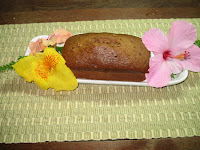“A human being can live without food for several weeks because the body uses its fat and protein stores to help it in this process. A fat person is likely to survive for a longer time than a thin man because of the quantity of fat stores. Yet a lot depends on the person and it is certain to leave a person with a lot of tiredness and lack of energy. But water is an entirely different case. A person would most certainly die if he has to go without water for three or four days at a stretch. The size of the person is of no consequence in a situation when there is no water. Thus it has to be concluded that water is more important than food as lack of water leads to dehydration and ultimate death. The water content in the body has to be regularly maintained.”
 that we use to pump water from the stream in the back of the house (about 200 feet from the back of the house and pictured to the left) to water plants during the dry season. We have a 6,900+ gallon cistern which has two holding tanks to collect the water from the roof; one on each side of the house. These tanks have fine, wire mesh filters on the outlet pipe going into the cistern and hold a little over 5 gallons of water before it empties into the cistern. The purpose of the holding tanks is to let the dirt and/or debris settle to the bottom thus allowing the cleaner water to flow into the cistern. We have never been without water in the 9 1/2 years of living in the house, even during the driest times of the year. Of course, we are conservative and watch our consumption of both water and electricity.
that we use to pump water from the stream in the back of the house (about 200 feet from the back of the house and pictured to the left) to water plants during the dry season. We have a 6,900+ gallon cistern which has two holding tanks to collect the water from the roof; one on each side of the house. These tanks have fine, wire mesh filters on the outlet pipe going into the cistern and hold a little over 5 gallons of water before it empties into the cistern. The purpose of the holding tanks is to let the dirt and/or debris settle to the bottom thus allowing the cleaner water to flow into the cistern. We have never been without water in the 9 1/2 years of living in the house, even during the driest times of the year. Of course, we are conservative and watch our consumption of both water and electricity. away from the wall to gain access.
away from the wall to gain access.  Now, to get potable water. The stream we have in back, as I said, was only used to pumped water for plants. Since it is located at the bottom of the mountain and there are cows and horses around, it is not something we want to drink and is full of silt. (The photo to the left shows how silty the water is.) My husband came up with the idea to use one of my big planter boxes we brought from the states. It already had a hole in the side about 2" from the bottom so we washed gravel and sand and then put in a layer of gravel, a sheet of a special, porous filter paper, the clean sand and another sheet of the filter paper. Of course we had to collect the gravel and sand and clean it.
Now, to get potable water. The stream we have in back, as I said, was only used to pumped water for plants. Since it is located at the bottom of the mountain and there are cows and horses around, it is not something we want to drink and is full of silt. (The photo to the left shows how silty the water is.) My husband came up with the idea to use one of my big planter boxes we brought from the states. It already had a hole in the side about 2" from the bottom so we washed gravel and sand and then put in a layer of gravel, a sheet of a special, porous filter paper, the clean sand and another sheet of the filter paper. Of course we had to collect the gravel and sand and clean it. After setting up the filter, we ran water through this and, at first, it came out only slightly silty.
After setting up the filter, we ran water through this and, at first, it came out only slightly silty.



We then ran water through a second time around the water was much cleaner looking. Can you tell which glass contains the "filtered" water?



 However, since there is no rain, we pump water up to the drums first, let it settle to collect any sediment and then, through a faucet in the bottom of both drums, we hook up the hose and gravity pump it to the bodega barrels.
However, since there is no rain, we pump water up to the drums first, let it settle to collect any sediment and then, through a faucet in the bottom of both drums, we hook up the hose and gravity pump it to the bodega barrels.Of course, to flush the toilets we keep a large container nearby to pour down the toilet rather than use up the filtered water. We use the unfiltered water for this task.





















